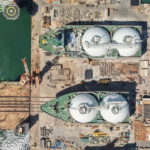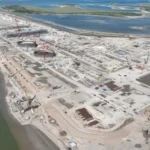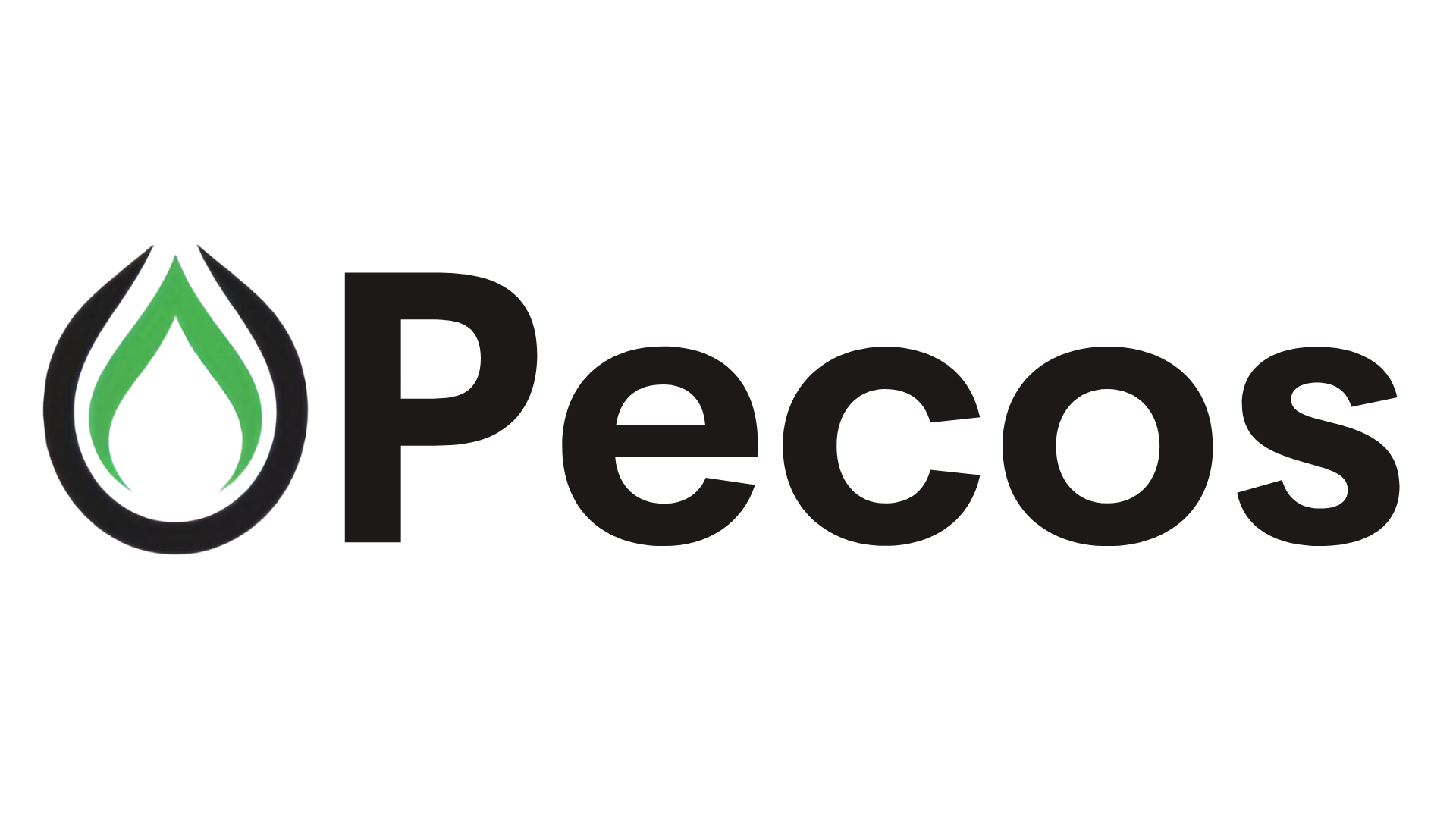Energy News Beat
ENB Pub Note: Golar’s earnings call financial specifics are at the top, and the LNGPrime update follows.
Key Financial Highlights:
-
Net Income: Reported $13 million before non-controlling interests, including $32 million in non-cash items, such as $25 million in unrealized mark-to-market losses on TTF and Brent oil and a $7 million loss on interest rate swaps.
-
Adjusted EBITDA: $41 million for Q1 2025, reflecting operational performance.
-
Cash Position: Total Golar cash stood at $678 million, indicating strong liquidity.
-
Revenue: Slightly lower compared to Q1 2024, primarily due to market dynamics affecting FLNG tariffs.
Operational and Strategic Highlights:
-
FLNG Focus: Golar emphasized its position as a leading floating liquefied natural gas (FLNG) company, operating three FLNG units: Hilli (operational), Gimi (moored offshore Senegal/Mauritania), and Mark II (under conversion). The company highlighted its unique “FLNG as a service” model, enabling resource owners to monetize gas reserves without significant capital commitments.
-
Major Contracts Secured: Golar secured two 20-year charters with Southern Energy (SESA) in Argentina:
-
FLNG Hilli (2.45 MTPA capacity) for redeployment post its current Cameroon contract ending in July 2026.
-
Mark II FLNG (3.5 MTPA capacity), with definitive agreements signed for a 20-year charter. Construction and conversion are progressing.
-
-
Hilli Performance: Continued its strong operational track record, having delivered 128 cargoes since 2018. The recontracting process in Argentina is on schedule, with conditions precedent expected to be fulfilled in Q2 2025.
-
Gimi Commissioning: Full commissioning began in January 2025 with feed gas from BP’s FPSO, marking progress toward its 20-year contract offshore Senegal/Mauritania.
-
Asset Optimization: Golar sold the LNG carrier Golar Arctic, aligning with its focus on FLNG over traditional LNG shipping.
-
Future Growth: The company is exploring a fourth FLNG unit, engaging with shipyards to secure construction once a charter for the Mark II is finalized. Discussions are ongoing for additional long-term FLNG opportunities.
Market and Strategic Outlook:
-
Market Position: CEO Karl Fredrik Staubo emphasized Golar’s leadership in the FLNG market, noting, “We are the only proven provider of FLNG as a service.” The company aims to maintain momentum into 2025 with new charters and project developments.
-
Challenges: Revenue volatility due to fluctuating LNG prices, potential project delays, geopolitical risks, and regulatory changes were noted as risks. However, Golar’s business model is designed to remain robust amid price volatility.
-
Argentina Project: Analysts raised questions about infrastructure development in Argentina, indicating interest in Golar’s expansion in the region. The company is confident in meeting project timelines.
Stock Market Reaction:
-
Posts on X suggest market sentiment was mixed, with some emotional reactions to the slight revenue decline compared to Q1 2024. However, the strategic contract wins and operational progress were viewed positively by investors.
-
The earnings call included presentations by CEO Karl Fredrik Staubo, CFO Eduardo Maranhao, Chairman Tor Olav Trøim, and CTO Morten Skjong, followed by a Q&A session with sell-side analysts.
-
Presentation materials and a replay of the call are available in the Investor Relations section of Golar’s website (www.golarlng.com) (www.golarlng.com).
Update from LNGPrime
Trøim revealed this during Golar’s first-quarter earnings call on Tuesday. He has not been on Golar’s earnings calls for ten years.
Golar currently has two operational floating LNG units, which were converted from LNG carriers, including the 2.7 mtpa FLNG Gimi, which is located at the GTA hub offshore Mauritania and Senegal, and the 2.4 mtpa FLNG Hilli, which is currently located offshore Cameroon.
Pan American Energy, Golar LNG, YPF, Pampa Energia, and Harbour Energy recently took a final investment decision for the Southern Energy floating LNG export project in Argentina.
Under a 20-year charter deal, the FLNG Hilli will work for Southern Energy (SESA) offshore Argentina.
In addition, Golar and SESA have signed definitive agreements for a 20-year charter for the 3.5 mtpa MKII FLNG, currently under conversion at CIMC Raffles shipyard in Yantai, China. This charter remains subject to FID.
As part of the $1.6 billion EPC agreement signed with CIMC Raffles last year, Golar has also secured an option for a second MK II FLNG conversion slot at CIMC for delivery within 2028.
This expected delivery is subject to the unit being ordered in 2025.
Golar has three different FLNG designs: the MK I, MK II, and MK III, which is a newbuild design.
These range in LNG liquefaction capacity from around 2 mtpa up to a maximum of 5.4 mtpa for MK III.
Seatrium built the MK I units, while Golar worked with Samsung Heavy on the MK III design.
Trøim said during the call that Golar’s board “wants to continue to build this company.”
He said that Golar has confirmation of the MKII FLNG, which is set for final approval “later this year.”
“We also have the possibility of concluding a commitment for vessel four and also maybe vessel five within this year. We’ll see what. We’re certainly going to build more,” he said.
“We are undoubtedly having the (leadership position) in a business set for massive growth,” he said.
“And I think if you look into what happened in the FPSO industry, it grew effectively from two units to 250 units in 40 years. I think we will see a very similar track here. And the reason is the same. It is a lower-cost option to build floating units than land-based LNG terminals,” he said.
Golar is working with shipyards and topside equipment providers to firm-up prices and schedules for potential ordering of additional unit(s) within 2025.
During the call, Golar’s CEO Karl Fredrik-Staubo also provided further color regarding the potential orders of future units and the construction period.
“For the MK I and II, which are both based on conversions, the conversion time is approximately three years,” Staubo said.
“For the MK III, because you start from scratch, you need to add another year. So approximately four years,” he said.
“The reason why we’re ramping up the shipyard activity at the moment is to safeguard that three-year construction time, and at some point, you should expect to see long leads also being included in such preparations,” he said.
Answering a question about the demand for vessel capacities, he said there are “more commercial opportunities for the smaller sizes and then somewhat fewer for the larger.”
“However, for some of these larger opportunities, you may also need this level of size to make development economics. So what you should expect to see is that we are right now progressing conversations or negotiations for all three different designs, and you could see us progressing with more than one ship this year,” he said.
“I think it’s also fair to say that there are several people that we have advanced stages of commercial negotiations with that are now left without a liquefier as the Argentinian contracts took both the Hilli and the MK II and as such, there’s no available FLNG. And those are obviously the counterparts that we are concentrating on from the commercial side right now,” he said.
We give you energy news and help invest in energy projects too, click here to learn more
Crude Oil, LNG, Jet Fuel price quote
ENB Top News
ENB
Energy Dashboard
ENB Podcast
ENB Substack
The post Golar chairman says FLNG industry set for ‘massive’ growth appeared first on Energy News Beat.









